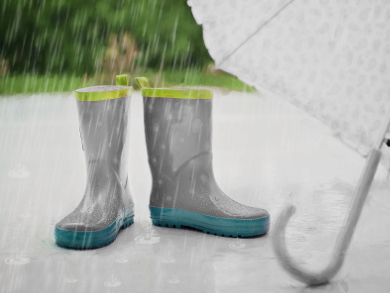Meteorologists distinguish between two varieties of precipitation: the fine but steady land rain is usually caused by extensive moist air masses covering large areas with rain. Showers and thunderstorms, so-called convective precipitations, are usually violent, but localized and short-lived. They occur when warm air rises locally and the moisture in it condenses.
Hengchun Ye, California State University, Los Angeles, USA, and colleagues have evaluated the precipitation and temperature data of 152 weather stations in Europe and North Asia in the period from 1966 to 2000. On the basis of the rain strength, the duration, and the weather conditions, they were able to identify whether the rain was a non-convective rain (or snowfall), or a shower or thunderstorm.
In the years covered by the study, the frequency of the showers increased by 8.5 days per decade and the intensity by 0.14 mm per day. Overall, the proportion of convective precipitates increased from 18 to 43 %, while the land rain dropped from 68 to 39 %. Showers have thus replaced the light but steady land rain as the most frequent form of rainfall. The cause of the rapid increase in showers and heat is the warming of the air by climate change. As a result of the heating, the air absorbs more moisture by evaporation. It rains more frequently and more violently as the damp air masses rise. The analysis showed that for each degree of air temperature increase, the convective precipitates increased by 18.4 %.
For the present and the future, this means that the precipitation in many parts of Europe and North Asia will become more unpredictable, more localized, and shorter-lived. Instead of regular land rain, heavy showers and heavy rain will dominate. Because soils and vegetation cannot absorb such short-term water spills, this could increase the risk of flooding.
- Rapid decadal convective precipitation increase over Eurasia during the last three decades of the 20th century,
Hengchun Ye, Eric J. Fetzer, Sun Wong, Bjorn H. Lambrigtsen,
Sci. Adv. 2017, 3, e1600944.
DOI: 10.1126/sciadv.1600944




